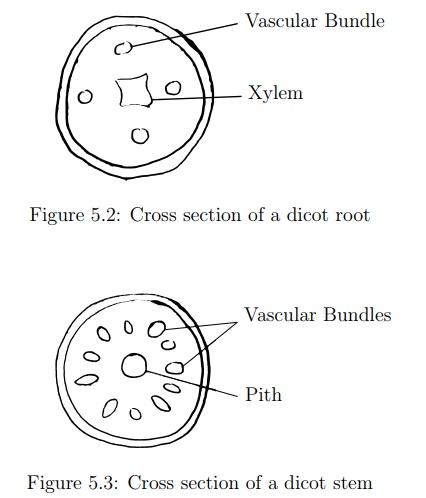Chapter: Biology Practicals: Biology Activities with Specimens
Investigation of Division Angiospermophyta

Investigation of Division Angiospermophyta
Identification of the Reproductive Parts of the Flowers
Angiosperms develop specialized structures called owers used for reproduction. A ower is a modi ed part of a stem in which the primary sex organs are found. A ower has the following parts; peduncle, receptacle, calyx (sepal), corolla (petals). The male reproductive organ called the stamen consists of lament and anthers which form pollen grains. The female reproductive organs consisting of an ovary, style and stigma. Hibiscus owers are bisex-ual because they have both male and female organs in one ower. Some pawpaw owers have either female or male owers and are referred to as uni-sexual owers. Plants with both male and female owers on the same plant are called monoecious like maize. Plants with male and female owers on separate plants are deciduous like a pawpaw plant.
Learning Objectives
To identify the reproductive parts of the owers.
Materials
A variety of owers like hibiscus, rose, or morning glory, razor blade, hand lens, cardboard box, and a labeled diagram of a ower.
Hazards and Safety
During collection of owers from plants be careful with bees and you should not destroy other parts of the plant.
Preparation Procedure
1. Collect a variety of owers from a nearby garden.
2. Prepare cardboard mounts from empty boxes by cutting the cardboard into small squares using a razor blade.
Activity Procedure
1. Examine the external structures of the owers collected, look for simi-larities and differences.
2. Draw and label the external structures of a hibiscus ower.
3. Cut a hibiscus ower in longitudinal section by starting the cut at the base and cutting along the carpel to the stigma.
4. Observe the ower using a hand lens, then draw and label the observed internal structures of the ower.
Results and Conclusion
The female reproductive organs, the stigma, style, and ovary should be visi-ble. You will also see the male reproductive parts which are the anthers and lament.

Figure 5.1: The reproductive structures of a bisexual angiosperm.
Clean Up Procedure
1. Collect all the used materials, cleaning and storing items that will be used later. No special waste disposal is required.
Notes
Cutting the longitudinal section of the hibiscus ower should be done care-fully to avoid destroying other oral parts.
Examination of Structures of Representative Dicotyle-dons and Monocotyledons
Monocot and dicot plants are owering plants and are found in division Angiospermatophyta. They di er in morphological structures from roots, stems, leaves, and owers, eg root size, leaf shape, oral parts, arrangement of vascular bundles and number of cotyledons in their seeds.
Learning Objectives
To describe the structures of representative dicotyledons and mono-cotyledons.
Materials
Razor blade, maize grain, bean seed, petri dishes*, GV stain*, cardboard boxes, water drop microscope*, scalpel, monocot and dicot plants.
Hazards and Safety
Care must be taken when cutting the specimens as you may cut your-self.
Preparation Procedure
1. From a nearby eld or garden, collect dicot plants(hibiscus plant, bean plants, black jack plant)and monocot plants(grasses, maize plants, Com-melina spp).
2. Place the plants into a beaker with a few drops of GV.
Activity Procedure
1. Observe the dicot and monocot plants from the external appearance by considering roots, leaves and owers.
2. Record the features seen from each plant.
3. Cut a transverse section of a stem and roots of monocot and dicot that can be mounted on a slide and observe the arrangement of the vascular bundles on a water drop microscope.
4. Draw the vascular bundles as seen under water drop microscope( for monocot and dicot roots and stem).
5. Cut maize grain and bean seeds longitudinally to see how many cotyle-dons are in each specimen and draw them.
Results and Conclusions
All of the common features of each class should be easily observed.

Figure 5.3: Cross section of a dicot stem
Clean Up Procedure
1. Remove all waste materials from the bench.

Figure 5.4: Cross section of a monocot
Figure 5.5: Cross section of a stem
Related Topics